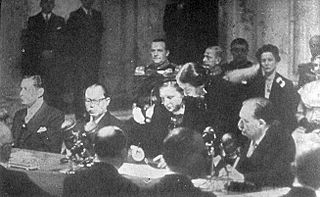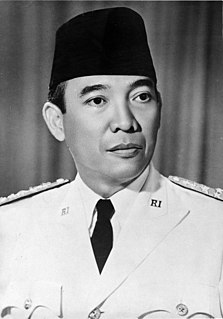
South Sumatra is a province of Indonesia. It is located in the southeast of the island of Sumatra, The province spans 91,592.43 km2 (35,364 sq mi) and had a population of 7,450,394 at the 2010 Census; the latest official estimate is 10,675,862. The capital of the province is Palembang. The province borders Jambi to the north, Bengkulu to the west and Lampung to the south. The Bangka Strait in the east separates South Sumatra and the island of Bangka, which is part of the Bangka Belitung Islands province. This province is rich in natural resources, such as petroleum, natural gas and coal. The province is very diverse, as it is inhabited by many different ethnic groups. The Malays is the dominant ethnic group in the province. Most of them spoke the Palembang Malay, which is mutually unintelligible to both Indonesian and Standard Malay. Other ethnic groups also inhabits the province, such as the Javanese, Sundanese, Minangkabau and Chinese. Most of them are concentrated around urban areas, as they are mostly immigrants from other parts of Indonesia.

Bangka is an island lying east of Sumatra, administratively part of Sumatra, Indonesia, with a population of about 1 million. It is the 9th largest island in Indonesia and the main part of Bangka-Belitung Province, being one of its namesakes alongside the smaller Belitung across the Gaspar Strait. The provincial capital, Pangkal Pinang, lies on the island. The island is administratively divided into 4 regencies and a chartered city.

The Aceh War, also known as the Dutch War or the Infidel War (1873–1904), was an armed military conflict between the Sultanate of Aceh and the Kingdom of the Netherlands which was triggered by discussions between representatives of Aceh and the United States in Singapore during early 1873. The war was part of a series of conflicts in the late 19th century that consolidated Dutch rule over modern-day Indonesia.

Bukittinggi, is the third largest city in West Sumatra, Indonesia, with a population of over 124,000 people and an area of 25.24 km². It is in the Minangkabau Highlands, 90 km by road from the West Sumatran capital city of Padang. The whole area is directly adjacent to the Agam Regency, and is located at 0°18′20″S100°22′9″E, near the volcanoes Mount Singgalang (inactive) and Mount Marapi. At 930 m above sea level, the city has a cool climate with temperatures between 16.1° to 24.9°C.

Deli Serdang is a regency in the Indonesian province of North Sumatra. It surrounds the city of Medan, and also borders the chartered city Binjai, which is effectively a bedroom community for Medan. t occupies an area of 2,241.7 sq.km. The capital of the district is Lubuk Pakam, which is located approximately 30 km east of Medan. Its 2010 census population was 1,790,431 people, but the latest official estimate is 1,865,695. Medan's new airport in Kuala Namu is in this regency.

The Japanese Empire occupied the Dutch East Indies, now Indonesia, during World War II from March 1942 until after the end of the War in September 1945. The period was one of the most critical in Indonesian history. The Dutch East Indies had been a colony of the Netherlands since 1819. However, the Netherlands itself had been occupied by Germany, and thus had little ability to defend its colony against the Imperial Japanese Army, and less than three months after the first attacks on Borneo, the Japanese navy and army overran Dutch and allied forces. Initially, most Indonesians joyfully welcomed the Japanese as liberators from their Dutch colonial masters. The sentiment changed, however, as Indonesians realized that they were expected to endure more hardship for the Japanese war effort. In 1944–1945, Allied troops largely bypassed Indonesia and did not fight their way into the most populous parts such as Java and Sumatra. As such, most of Indonesia was still under Japanese occupation at the time of its surrender in August 1945.

Greater Indonesia, or in Indonesian and Malaysian, Indonesia Raya or Melayu Raya, was a political concept that sought to bring the so-called Malay race, only part of which were the actual Malays, together by uniting the British territories of Malaya and Borneo with the Dutch East Indies. It was espoused by students and graduates of Sultan Idris Training College for Malay Teachers in the late 1920s, and individuals from Sumatra and Java including Muhammad Yamin and Sukarno in the 1950s. Indonesia Raya is also the name of the Indonesian national anthem.

Mohammad Yamin was an Indonesian poet, politician and national hero who played a key role in the writing of the country's 1945 constitution.
This is the Timeline of Indonesian National Revolution (1945–1950)

Sultanate of Deli is a 1,820 km² Malay state in east Sumatra founded in 1630. A tributary kingdom from 1630 it was controlled by various Sultanates until 1814, when it became an independent sultanate and broke away from the Sultanate of Siak.

Malay Indonesians are ethnic Malays living throughout Indonesia as one of the indigenous peoples of the island nation. Indonesia has the second largest ethnic Malay population after Malaysia. Indonesian, the national language of Indonesia, is a standardized form of Malacca ("Riau") Malay. There were a number of Malay kingdoms in Indonesia that covered the islands of Sumatra and Kalimantan, such as Srivijaya, Melayu Kingdom, Sultanate of Deli, Sultanate of Siak Sri Indrapura, Riau-Lingga Sultanate, Sultanate of Bulungan, Pontianak Sultanate, and the Sultanate of Sambas.

The Simalungun people are an ethnic group in North Sumatra, considered one of the Batak peoples. Simalungun people live mostly in Simalungun Regency and the surrounding areas, including the city of Pematang Siantar, an autonomous city, but previously part of Simalungun Regency. The regent of Simalungun is JR Saragih.
The East Sumatra revolution, also known as the East Sumatra Social Revolution, began on 3 March 1946. Across 25 "native states", many sultanates were overthrown and mass killing of members of the aristocratic families were performed by armed pergerakan groups. To the opportunistic pergerakan militants, the revolutionary movement was seen as one of the means for East Sumatra to be freed from colonial overlordship and to join the larger Indonesian National Revolution. Participants of the revolution were believed to be provoked by leaders to kill aristocrats and create violence. These belligerents had three prime objectives: to eliminate the sultans and aristocrats, to seize their wealth and to eliminate the region's feudal social structure. The revolution brought about the formation of the State of East Sumatra), which was dissolved when the region became part of the Indonesian republic.
Sultan Alauddin Ibrahim Mansur Syah, also known as Ali Alauddin Mansur Syah was the thirty-third sultan of Aceh in northern Sumatra. He was the eight ruler of the Bugis Dynasty and ruled de facto from 1838, formally from 1857 to 1870.

The Aru was a major Sumatran kingdom from the 13th to the 16th century. It was located on the eastern coast of North Sumatra, Indonesia. In its heyday the kingdom was a formidable maritime power, and was able to control the northern part of the Malacca strait.
Tuanku Sri Paduka Gocah Pahlawan, titled Laksamana Khoja Bintan, was the founder of the Sultanate of Deli and the Sultanate of Serdang in North Sumatra, Indonesia. According to the tarombo from Deli and Serdang, Gocah Pahlawan was of keling (Indian) ethnicity, sent by Sultan Iskandar Muda in 1612 to rule in the former Aru Kingdom. He was appointed as a representative commander of the Aceh Sultanate for the area, to fight the Portuguese influence and establish alliances with the local population, who generally were Karo peoples.






















